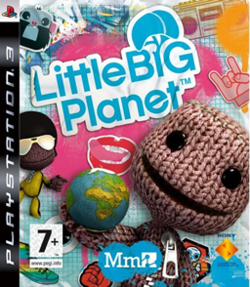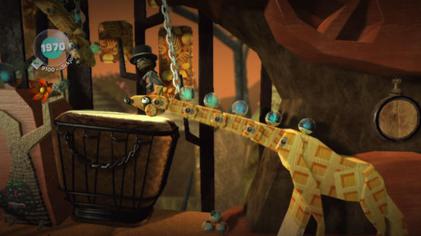![]() It is easy to assume that the level of user created content on social websites is exploding like fireworks on the Fourth of July. Our recent discussions regarding user creation and innovation can only lead us to believe that this online imagination will no doubt foster the futures of many new businesses.
It is easy to assume that the level of user created content on social websites is exploding like fireworks on the Fourth of July. Our recent discussions regarding user creation and innovation can only lead us to believe that this online imagination will no doubt foster the futures of many new businesses.
Labels: sharing, user-generated content
In an age when video games are differentiated by specifics such as HD graphic resolution, Sony sought to take a step backwards and develop a product with broad enough appeal to attract as many consumers as possible. This challenge, however, did not rely on piecing together the ultimate gamer market segmentation report. Rather, Sony needed to create an approach that did this groundwork for them, fast. The Wii gamer segment, where users are personalizing their machines and game profiles to interact with an online community, is growing steadily and, most recently, out-sold Sony's PS3 over 4 to 1 (http://www.1up.com/do/newsStory?cId=3171305). Further, video game production costs, 3 years ago, ranged between $3 million and $6 million (http://news.bbc.co.uk/1/hi/technology/4442346.stm). Estimates today place costs upwards of $20 million. New video games, thus, need relatively strong ROI.
So, t hen, how might Sony safely reach as many customers as possible? Meet LittleBigPlanet. LBP is a world where gamers guide 'Sack puppets' through any challenges made available to them. These 'Sack people' range from being entirely new to resembling characters from various other popular games. And, of course, they can be customized.
hen, how might Sony safely reach as many customers as possible? Meet LittleBigPlanet. LBP is a world where gamers guide 'Sack puppets' through any challenges made available to them. These 'Sack people' range from being entirely new to resembling characters from various other popular games. And, of course, they can be customized. But Sony did not stop at this simple functionality, which is found in a majority of today's games. LBP is a semi-open game platform in the form of a developer's kit. Players can build their own worlds quickly, customized however they please. These worlds can then be shared online amongst the PS3 LBP community. Appropriately, LittleBigWorkshop's catch phrase is Play. Create. Share.
But Sony did not stop at this simple functionality, which is found in a majority of today's games. LBP is a semi-open game platform in the form of a developer's kit. Players can build their own worlds quickly, customized however they please. These worlds can then be shared online amongst the PS3 LBP community. Appropriately, LittleBigWorkshop's catch phrase is Play. Create. Share.
While there were 50 pre-built levels included with the game, Sony looks to the community of LBP gamers to create worlds of play applicable to their demographic or something to which their segment is emotionally tied. For example, there is an up-cropping of worlds resembling the early Mario Brothers games. This  externalization of NPD (albeit partial because gamers do not truly create an entirely new product) is apparently a fun process for the user and results in a products personalized to a broad spectrum of segments. This is not the first game to provide this capability; level building dates back to at least 1991 in a game by Epic called ZZT (http://blog.wired.com/games/2008/10/first-impressio.html). However, this does represent a shift towards NPD via social media, where gamers add value to their own community through co-creation. The result thus far, though muddled by the current recession, is reasonably good. After its launch completed early this November, LBP's sales placed it in the top 10 titles for October with only a few day's worth of availabilty accounting for that ranking (http://www.1up.com/do/newsStory?cId=3171305).
externalization of NPD (albeit partial because gamers do not truly create an entirely new product) is apparently a fun process for the user and results in a products personalized to a broad spectrum of segments. This is not the first game to provide this capability; level building dates back to at least 1991 in a game by Epic called ZZT (http://blog.wired.com/games/2008/10/first-impressio.html). However, this does represent a shift towards NPD via social media, where gamers add value to their own community through co-creation. The result thus far, though muddled by the current recession, is reasonably good. After its launch completed early this November, LBP's sales placed it in the top 10 titles for October with only a few day's worth of availabilty accounting for that ranking (http://www.1up.com/do/newsStory?cId=3171305).
Another interesting and, perhaps, more poignant insight is that this same approach and capability, including all the community communication elements, were available for PC games decades ago. Sony's LBP model is hardly a new concept for innovation. Yet, perhaps users were not yet conditioned to develop and share as readily as they are today.
Customer Co-creation -- The Secret Sauce for Today's Top Global Web Sites
6 comments Posted by Adam B. Needles at 1:00 PM
I was conducting research on the topic of Internet marketing in the era of Web 2.0, and I ran across some interesting data points. In the early years of Web growth, ad-supported news content and consumer e-mail were the two greatest drivers of the top global Web sites such as Yahoo!. But trends such as social networking and blogging have changed this dynamic.
Two data points speak to how much this has changed -- especially with respect to how much customer co-creation is driving the future of the Web:
> Growth among traditional, ad-driven news sites is flat: "[O]nline news audience growth is flat and the market is highly fragmented, with nearly one-half of traffic going to sites that are below the top 100 news sites," according to a press release from technology industry analyst firm Jupiter Research from March of this year. And this is even as the number of Web sites globally continues to grow at a rediculous pace.
> Participation dominates the top global Web sites: Among the top 10 Web sites globally, according to Internet site tracking service Alexa, 5 out of those 10 are now based on user-generated content -- i.e., they are social media, social networking or user-contributed media sites. The list includes: YouTube (3), Facebook (5), MySpace (7), Wikipedia (8) and Blogger.com (9).
Do you have any examples of acceleration of this paradigm shift? If so, please share them.
